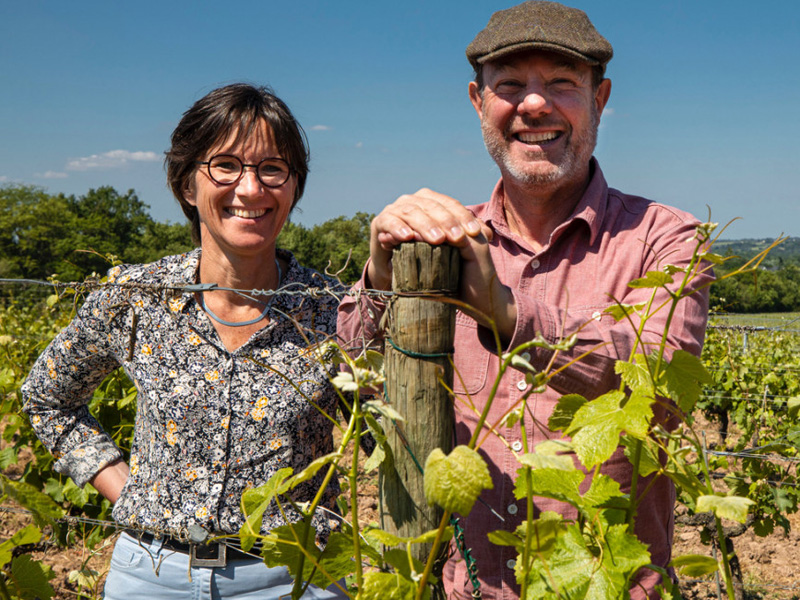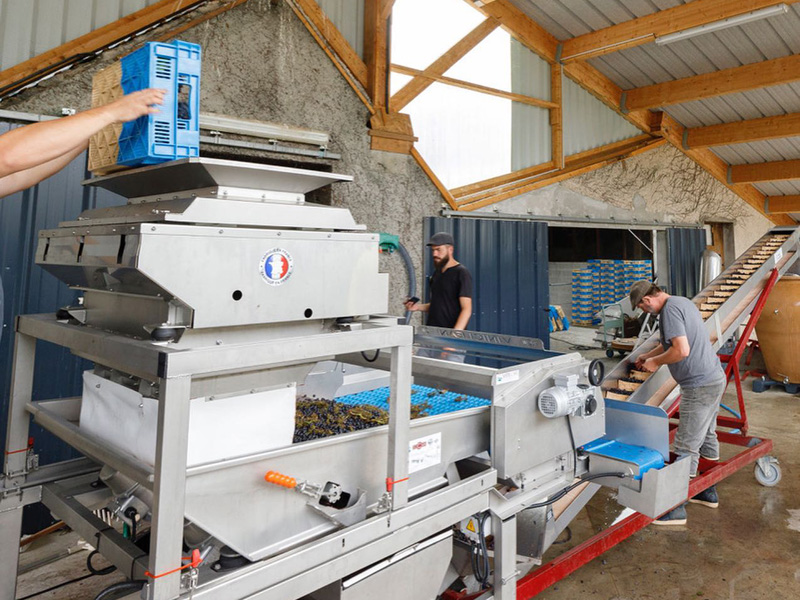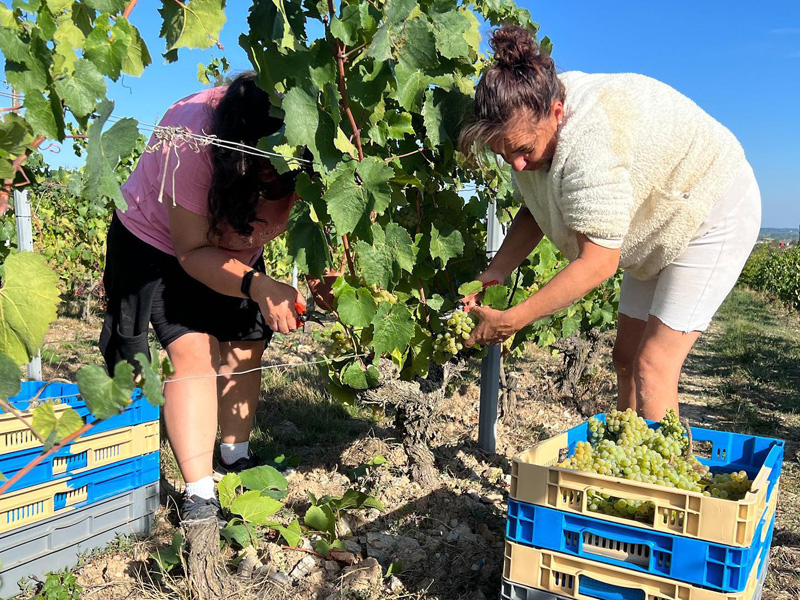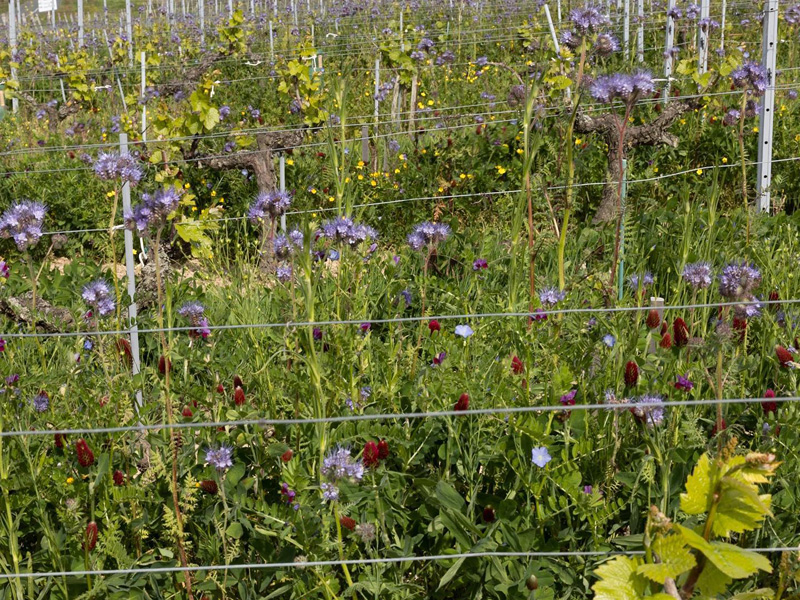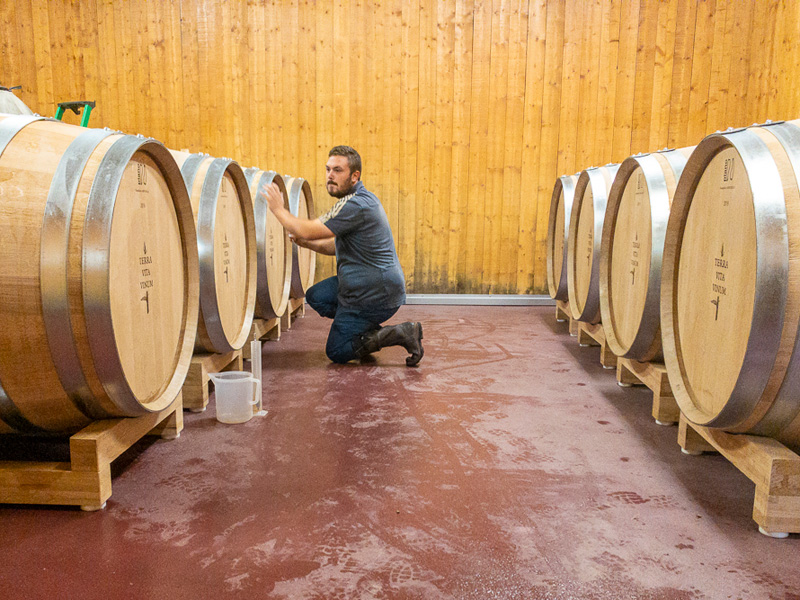Terra Vita Vinum
– Loire, France
In the heart of the Anjou Noir lies the Terra Vita Vinum estate. Owners Bénédicte Petit and Luc Briand purchased the land in 2019 from the Richou family, who had been farming the land for several generations.
The estate of Terra Vita Vitum can be divided into two appellations: Anjou Noir in the Loire, south of Angers, and a small piece of land in the Anjou Blanc. The two are distinguished by their unique climates and soil, giving each cuvée its distinct character.
Bénédicte, Luc, and their winemakers stay as close to nature as possible, working biodynamically and using only their own natural yeasts. Aging is done mainly in stainless steel, and intercropping is left alone as much as possible to promote biodiversity and encourage natural pesticides.
The style has become most present in the whites, ranging from the entry-level “Terre de 3”-cuvée to the top-level “Grandes Rogeries.” They all showcase pristine citrus and orchard fruit with the salty minerality we get from the schist and volcanic terroirs of the Anjou Noir region.
The “Rhyolite”-soils, in particular, contribute a lot to the style of Terra Vita Vinum. This type of volcanic rock creates minerality, saltiness, and a hint of smoke to the aroma. Anjou Noir “Gabouchons” 2021 is characterized by velvety, soft tannins and a precise and refreshingly vibrant finish. The aromatic complexity of the Anjou Blanc “Le Réau” 2020 makes this a highly original white wine with structure, wood and a tannic and mineral-laden ending.
The distributors pick for X-mas would be the Bigotièrre, an expression of classic Savennières Chenin Blanc. It stems from a plot containing mainly different types of schist in the soil that once was owned by Nicolas Joly and is also a stone’s throw away from Joly’s famous Coulee de Serrant vineyard. Aged on the fine lees for 18 months on 600l vats it’s characterized by ripe stone fruits, citrus, lemon zest, honey, and beeswax on the nose and an endless saline finish. It combines great with shellfish like langoustines and lobster, white meat, and sweetbreads.
Cultivation: Bio-dynamic
Production: 30 Ha, 120000 bottles per year
Varieties: Chenin Blanc, Chardonnay, Gamy, Cabernet Franc, Cabernet Sauvignon, Grolleau
Approach: Low-Intervention
Certifications: Biodyvin, Bio, AB
Sulfites: Depending on the cuvées. All the “Version Libre” wines (bottled with a blue wax capsule) are made without the addition of any sulfur. Some wines have the addition of low doses of sulfur during bottling, up to 35 mg/l.



